Thank you!
Just a Second, One of Our Experts Will Get in Touch With You Shortly
Ola Vs Uber | With increasing digitalization, cab-hailing services are at the center of people’s attention.
People are always looking for ways to save time and effort over traveling, increase in taxi services is helping them to enjoy the same.
With just one easy tap on your mobile, you can get a car with a driver right in front of you. Cab services have become means of transportation.
With the smooth and easy process of booking taxis, cabs, and other traveling vehicles Taxi Dispatch Softwares has started coming into the picture.
Applications like ola and uber have gained enormous growth. Both these apps are leading on their own within the taxi industry. These companies are providing high-quality taxi services to people globally. Here you can fid complete list of best rideshare apps in the world.
Ola and Uber India have become popular because of their robust functionality and advanced features. We will find Ola vs Uber which has gained an edge in the competitive world.
With such growth and popularity of applications like ola and uber many entrepreneurs are now looking forward to starting their taxi businesses.
This blog will provide you with information about features, business models, cost of building a taxi booking app, differences between Ola and Uber apps, the market share of Ola and Uber, and insights from a taxi booking app development company.
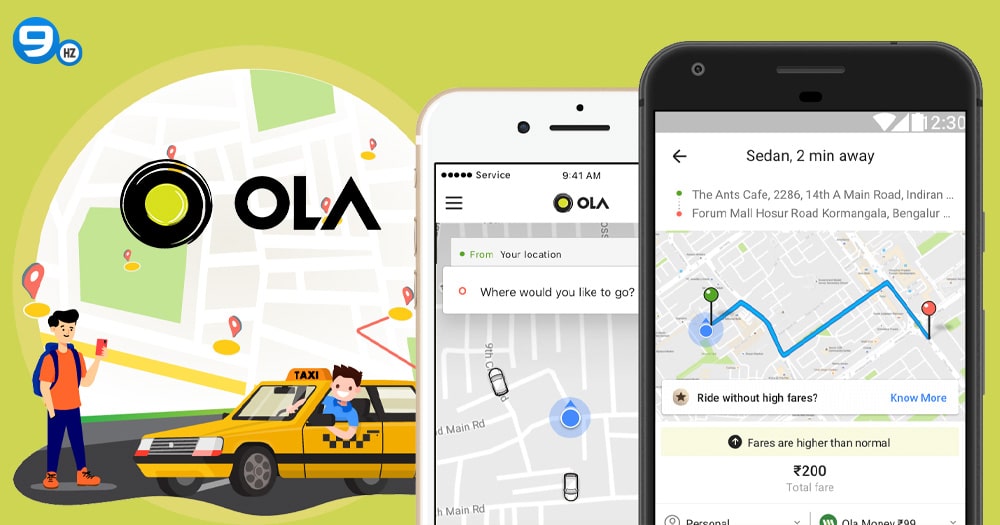
Ola cabs is an Indian multinational taxi service company, headquartered in Bangalore. It is amongst the top-notch taxi services started in the year 2010. The service of the application is rendered through the ola app.
Because of its advanced and miscellaneous features, the ola app has gained exponential growth in the market.
Ola app is successfully thriving within the competitive world of the taxi business.
Ola app keeps on re-inventing and strategizing new avenues to stay relevant with users.
The platform is very popular in India but has managed to come in limelight internationally due to its immense success and the ability to generate maximum revenue.
Request A Free Quote
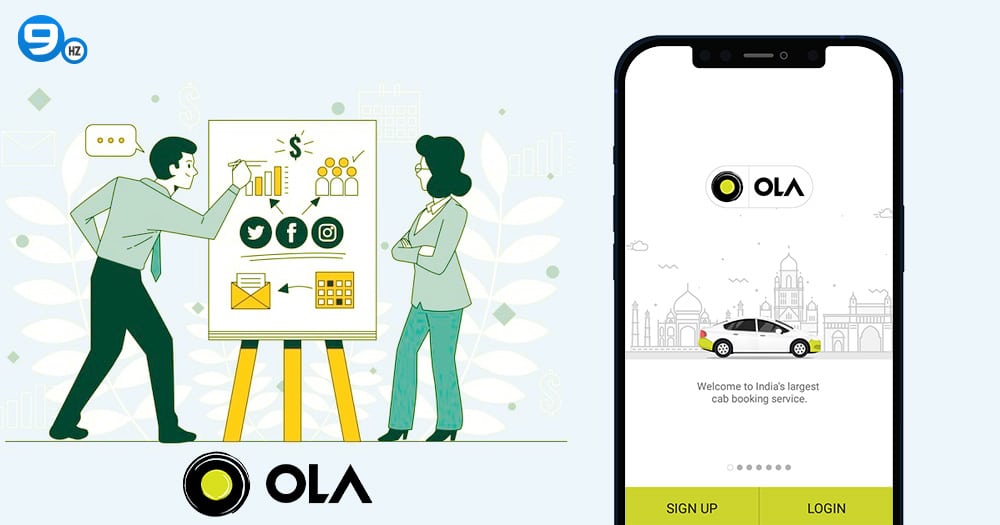
Ola serves millions of customers every day in over 169 cities. There are almost 125 million users registered on ola currently. Ola is valued at $10 Billion as a company generating an annual revenue of Rs. 2,544.63 Crores.
Let’s dig a little deeper into Ola’s business model to understand how Ola makes money.
Ola charges a percentage commission from the trips being carried out through its platform. Trip fares are charged to customers based on several factors like –
An estimated commission that Ola charges Per trip –
Ola has introduced its own wallet just like the PayTM wallet. Payments can be made through ola money which contributes to the revenue of Ola.
Brochures, pamphlets, or other advertising tools are given to commuters. Ola charges commissions for these promotions.
Ola has started a cab leasing program for its driver-partners. It buys cars and leases them out to drivers to enhance the loyalty of drivers toward Ola.
There is an initial fee of ₹4000 non-refundable, and ₹21,000 – ₹31,000 refundable security deposit. Also, a fixed daily fee of ₹700 -₹1150 is charged to the drivers for running vehicles
[Also read: How to Create an App like Careem]
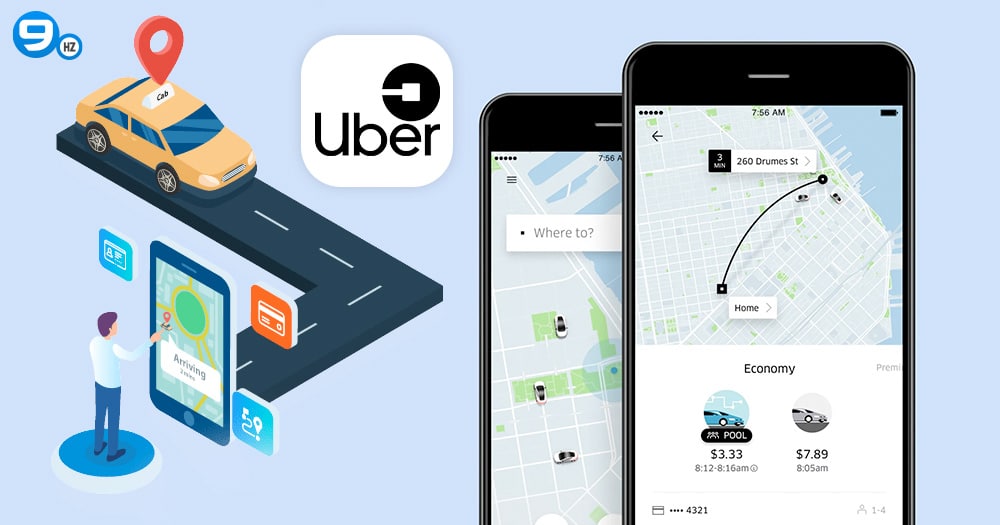
Uber Technologies, Inc. is American mobility as a service provider. It is based in San Francisco with operations in approximately 72 countries and 10,500 cities.
Uber is another topmost application changing the way people ride. Starting in 2008, uber officially launched in San Francisco.
Within 6 months of its launch, the uber app has gained 6000 users and provided about 20,000 rides making it grow faster.
The main reason behind the success of the Uber app is the next-gen features of the Uber app. You might be interested to knowing how to develop an app like uber.
Uber provides a transparent platform to start and accomplish the rides with a rider, driver, and admin feature.
Request A Free Quote
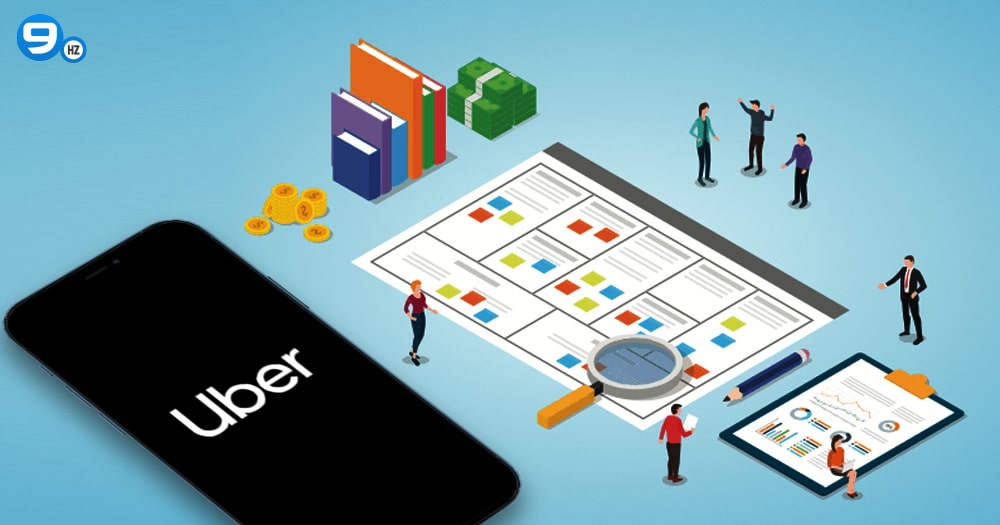
Uber is famous for its availability of luxury cars in the cab segment. Also uber provides corporate services to its clients. Uber generated revenue of $14.1 Billion in the last financial year. Let us look into the business model of Uber to better understand how Uber generates its revenues.
Uber trip incorporate –
Uber drivers make about 75% of the total ride fare and Uber’s commission is about 25%.
Uber has also started its venture Uber eats wherein they have created a network of local restaurants for food delivery services commissions based.
It’s a ride-sharing service aimed at business customers. Businesses can manage rides, send multiple rides and book rides even 30 days in advance for their clients or employees.
Uber has partnered with healthcare organizations. It did so to provide patients with different scheduling options.
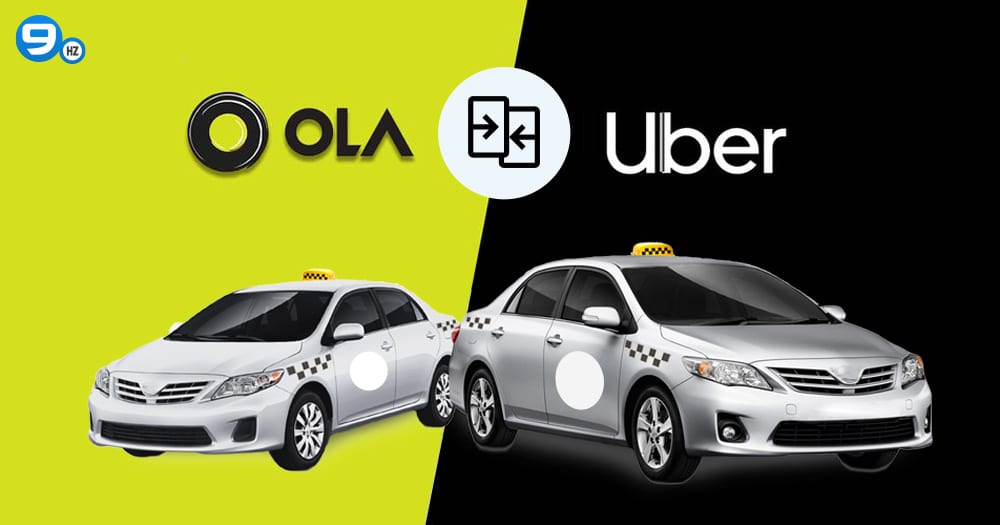
Uber and Ola’s apps provide hassle-free rides to travelers in just a few clicks. With both of the apps, cutting-edge features finding the best amongst the two is very difficult.
The popularity of any app depends on the features it possesses, specifications, user choice, and much more.
Further, you will find the feature-based comparison between uber and ola. You can go through my other guide on top taxi booking app features.
With this comparison, you will get a clear overview of how ola and uber successfully flourished in the taxi business market.
When the pickup point is considered in the apps, ola explicitly shows the pickup point, whereas uber does not.
Ola lets you enter an address and also shows the nearby pickup address, whereas you can navigate on the uber app.
There are different facilities to choose from when opting for a cab, there are several different options available on both ola and uber India.
In the uber app, you can enter the drop point in advance, whereas in the ola app you get to know about the types of cabs available with an approximate time to reach the user on the home page itself.
Both the apps offer mini, large, and share cab options for the users to choose from as per their needs.
It is hard to compare the cost of both platforms as the fee depends on the profit margin of the platform.
When both platforms are compared, uber shows different price ranges at the same for the various cabs available nearby.
Ola provides price comparisons from micro to shareable vehicles.
Both of the apps show their price range according to the destination and ride they offer.
One of the distinctive features that create a difference between both the taxi dispatch software platforms is the car’s color.
Ola app shows the color of the car along with it, which makes it easier for the passenger to identify the vehicle when it arrives at the location.
Uber, on the other hand, does not have any such feature.
The customer checks the number mentioned in the app and finds the car itself when it reaches the location.
The main feature of the taxi app solutions for both drivers and raiders is the display of search history.
Ola Vs uber, get everything covered in that field. This feature helps users go for invoices, rate the driver, support the issue, etc.
It differs in both because when a user clicks away from the history, they can choose support or help. Ola lets you select the support, and there are options for what problem you are facing.
In both the apps, trip history enables the user to analyze the start and endpoints, and driver rating gives the admin more information about you and the driver service.
| FEATURE | OLA | UBER |
|---|---|---|
| Service Availability | Approximately 60 countries | Approximately 70 countries |
| Car Types | Sedans, SUV, Luxury Sedans | Sedans, SUV, Accessible Vehicles, Premium Cars |
| Payment Method | Cash Credit Card, Debit Card, Mobile Wallets | Cash Credit Card, Debit Card, Mobile Wallets |
| GPS Facility | For both Rider and Driver | For both Rider and Driver |
| Review and Feedback Submission | Only available for Riders | Available for both Rider and Driver |
| Sign Up Discounts | $15 Referral Available | No Sign up offers available |

Here I go through the benefits of ola vs uber India. The taxi booking applications are a solution to several problems like reducing the waiting time on the road, looking out for cabs under the sun, and many other problems. There are several benefits one can draw from these applications. Apart from the passengers, there are several advantages for the drivers as well.
Below mentioned are the benefits of the taxi booking app for drivers and passengers.
| FEES | OLA | UBER |
|---|---|---|
| Base Fare | $2.50 | $2.50 |
| Minimum Fare | $9 | $9 |
| Charge Per Minute | $0.40 | $0.40 |
| Charge Per Kilometer | $1.45 | $1.45 |
| Cancellation Fee | $10 | $1 |
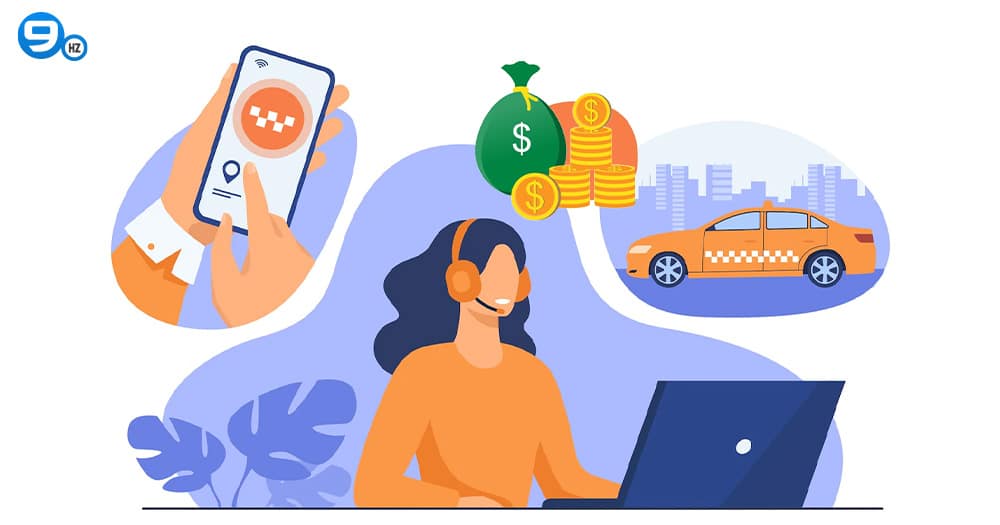
If you are interested in developing your own taxi booking app you will need to understand all the basic costs of the development of taxi booking apps. Here I wrote a detailed guide on taxi booking app development costs.
Depending upon your estimates and the time required for each step of software development we can calculate the approximate cost of Android and iOs apps. The average hourly rate for outsourced development is $30.
| DEVELOPMENT FEATURE | iOS | Android |
|---|---|---|
| Native Development | $13,500 | $15,000 |
| UX/UI Design | $5,400 | $6,000 |
| Backend Development | $6,000 | $6,000 |
| Web Development (an admin panel) | $5,100 | $5,100 |
| Testing and Quality Assurance | $8,900 | $9,800 |
| Project Management (10%-15% of the total budget) | $3,890 | $4,190 |
| Total | $46,980 | $49,980 |
These costs are roughly an estimation. The cost of developing a taxi booking app may vary as per features and demand.
There is tough competition in this arena of the taxi business. The inclusion of unique and advanced features can help the company stay ahead of its competitors and increase its user base. Following is the list of advanced features that must be included in taxi booking apps to make them reach the top of the industry.
This feature will enable the drivers to get authorization of driving the car under the application. They will get permission to take bookings and associate with the mobile application.
This software will help the drivers to manage their bookings. They would not have to go to and fro, but keep a tab on all of them together in one place. This software will also help them in getting proper instructions about the place they have received the booking form.
This one will work best in assisting the taxi service owners to get to know the number of drivers and taxis available in one place which can be sent to users to book from. This process will be very quick as selection can be made within 2-5 minutes. The users have to be intimidated by the taxis in proximity.
In case of high taxi demand, the taxi owners can surge the price and earn more profits on that day.
Every location in the city has its laws, roads, and timings. Therefore, the pricing per location can vary. This feature will help taxi owners to make money accordingly.
With this feature, the owners of the application can know about the cars providing services to the users during the busiest time of the day. As per the view, more drivers and more cars can be allotted accordingly.
If the user does not want to share their contact details with the driver, or vice-versa the app can provide a feature to keep it confidential. With the help of an in-app call feature, one can keep his number from being revealed.
To give an extra nudge to both drivers and passengers by offering them loyalty programs like offers, discounts, coupons, etc. features like these will always lure more users, making them use the app even more.
This feature will help the app owners in knowing the number of taxis that are in service and the zonal positions of the same. Analytics will help the users to know the performance and how many people are using it at a point in time as they got to know about the user who is making a booking through it.
The best feature is that allows people from other countries as well to book taxis without any hassle of communicating with the people and asking someone to book them a taxi. This feature is best for tourists.
With this integration, one can link their bank account or digital wallet directly to the app and let all deductions happen automatically from their accounts. This will save passengers from carrying cash and wallets.
Taxi booking applications have adopted advanced methods of making payments. Now payments can be made through multiple sources like cards, online banking, and mobile wallets, among others. This has made use of such apps handy.
Users will always be notified with push notifications once the booking is made. These notifications can also be used with sending notifications to inform users about new offers or discounts being launched by the app.
All users have to register before proceeding with the services. Also, each user needs to have a distinct account. login/sign up through social media accounts can help the users save their favorite locations and add payment methods. This will help users save a lot of their time.
This feature will allow the users to calculate the amount they will have to spend on a single ride. One can get to know the amount they would have to spend on the ride before availing of it.
It is easy for passengers to travel together if they can split the bill according to their ride. This feature enables users to pay separately keeping things transparent.
Gone are the days when only one booking could be made with one account. The new features in the application enable a user to make multiple bookings.
Under this feature, users can book a ride for their friends from a different location. All user has to do is enter pick-up and drop details.
A user in haste does not have time to make regular calls to the driver. The in-built call feature allows them to just tab on the icon to get connected to the driver
The application allows users to save emergency contact so that they can call them in case of any mishap.
A user is in a haste and doesn’t have the time to make a regular call to the driver. The in-built call feature allows them to just tap on the icon to get connected to the driver.
With the increasing growth of ola and uber apps, budding entrepreneurs are analyzing the market for the successful start of the taxi business.
Below mentioned are recent statistics that can draw a comparison line between ola Vs uber India.
Ola and Uber are both in high competition with each other. Both the applications offer a like-for-like pricing structure. Cost aside, the winner title can be given to uber. Uber is more established, it offers more ride types, is more widely available, and goes beyond rideshare to offer a food delivery service as well.
Here’s a list that will help you understand the winning points of both apps.
In the end, it can be said that both Ola and Uber are leading names in the taxi business and both are giving each other cutting-edge competition.
But, with the rise in new companies, you never know any company may supersede ola and uber soon.
Almost everyone has an opinion on the matter and it’s a hotly contested topic. It seems like Ola and Uber differ in a variety of areas, including pricing, user interface and experience, availability depending on the city or region, and even customer service. While opinions are naturally divided, some people might even argue that the two services have different pros and cons that make them complementary to one another rather than directly competing with each other. Ultimately, it comes down to personal preference as to which one someone believes is better.
Ola is more popular in India, while Uber has more of a global reach. One of the biggest distinctions is that Ola offers a wider variety of choices when it comes to vehicles and prices, allowing riders to pick whatever best suits their needs or budget. There are also certain discounts available through Ola that may make it more economical than Uber.
Is Ola owned by Uber? It is an interesting question that many people are asking. While the two companies are competitors, there are no clear indications that either company has managed to purchase the other.